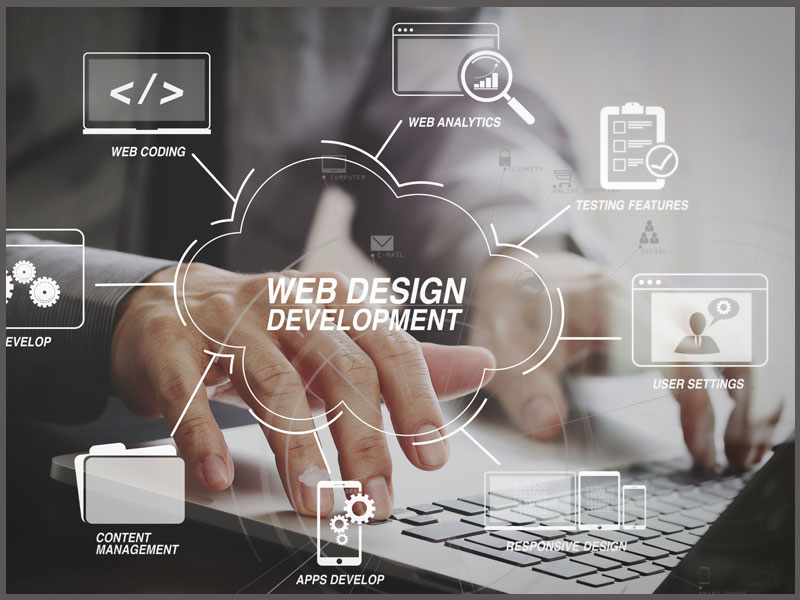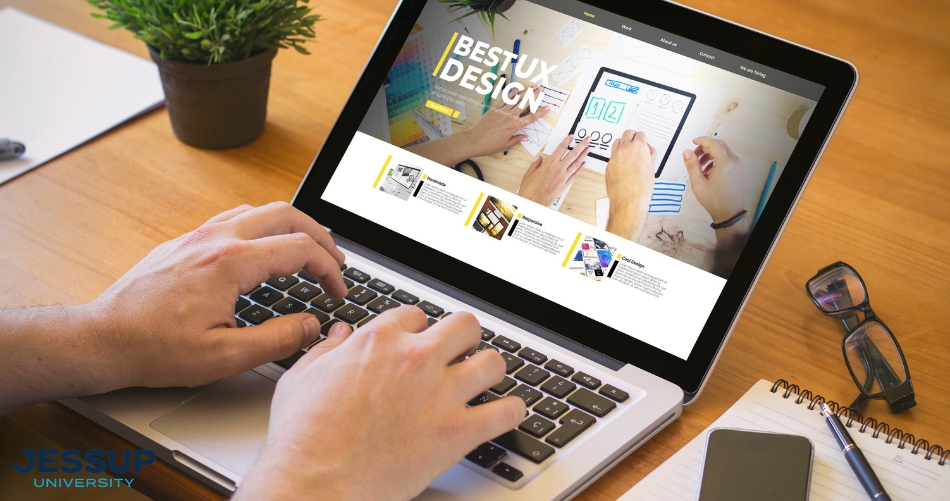The Best Types of Web Style to Improve User Experience and Involvement
In the ever-evolving landscape of electronic interaction, the effectiveness of website design substantially impacts customer experience and interaction. Various layout techniques, such as minimalist, receptive, and interactive designs, each offer special advantages that can deal with diverse customer needs. Recognizing which sorts of website design ideal serve these goals can be pivotal for businesses aiming to boost customer fulfillment and retention. The concern stays: which layout elements genuinely reverberate with users and foster purposeful engagement? The exploration of these concepts reveals important understandings that may redefine your method to website design.
Minimal Web Layout
As electronic landscapes become significantly messy, minimal Web layout has become a powerful approach to enhancing individual experience. This layout ideology focuses on simplicity, concentrating on crucial elements while eliminating unnecessary distractions. By making use of adequate white space, straightforward navigation, and a minimal shade combination, minimal style fosters clarity and routes individual focus to vital web content.
The core principle of minimalist Web style is to develop a seamless communication for individuals. By decreasing cognitive load, users can quickly understand information without feeling overwhelmed. This straight method not only boosts use however also urges interaction, as visitors are most likely to check out a website that is aesthetically appealing and simple to navigate.
Additionally, minimalist style commonly highlights typography and images, making use of these components strategically to convey messages properly. In essence, minimalist Web design is not just a fad; it is a thoughtful methodology that identifies the relevance of user-centered design.
Responsive Web Design
In today's diverse digital atmosphere, responsive website design has actually become important for creating a seamless individual experience throughout a wide variety of gadgets. As individuals gain access to internet sites on smartphones, tablets, desktops, and laptops, the capability of an internet site to adapt its design and content to various display sizes and resolutions is crucial.
Receptive website design uses adaptable grids, pictures, and CSS media queries to ensure that Web content is presented ideally, no matter the device used. This strategy not only enhances the aesthetic appeal of a website however also significantly boosts functionality. Users are most likely to involve with a site that supplies a constant experience, as it eliminates the frustration of needing to zoom in or scroll exceedingly.
Moreover, internet search engine, including Google, focus on mobile-friendly sites in search positions. By embracing receptive design, services can enhance their presence and reach a more comprehensive audience. This method additionally simplifies web site upkeep, as a single variation of the website can cater to all gadgets, lowering the requirement for numerous variations. In summary, responsive Web design is an essential method that boosts user experience, interaction, and total satisfaction.
Interactive Website Design
Responsive Web design prepares for enhancing individual experience, however interactive Web style takes this a step additionally by involving individuals in a much more vibrant method - Aligned Position Web Design. By including components such as computer animations, clickable models, and real-time responses, interactive website design mesmerizes individuals, drawing them into a richer browsing experience
This method not only fosters engagement but additionally urges customers to discover material actively rather than passively eating it. Strategies such as gamification, where individuals make rewards for completing jobs, can dramatically boost the time invested in a website and enhance overall satisfaction. Interactive attributes can streamline complex information, making it a lot more enjoyable and absorbable.

Including interactive design components can also bring about higher conversion rates, as users are most likely to engage with a site that proactively includes them. Aligned Position Web Design. Eventually, interactive website design changes individual experiences into remarkable trips, guaranteeing that site visitors return time after time
Apartment Layout
Defined by its minimalistic method, flat layout stresses simpleness and functionality, removing away unnecessary components and concentrating on vital functions. This layout viewpoint prioritizes usability, ensuring that users can browse user interfaces effortlessly and performance. By using a tidy visual, level design eliminates the mess commonly discovered in extra luxuriant styles, consequently enhancing individual concentrate on web content and performance.
The trademark of flat style lies in its usage of bold shades, straightforward typography, and geometric forms. These aspects add to an aesthetically enticing user interface that is both friendly and modern. Additionally, level layout promotes a feeling of clarity, enabling customers to discern crucial activities and info without diversion.
Moreover, level design is specifically reliable in responsive Web layout, as its simplicity equates well throughout various gadgets and display dimensions. By focusing on vital attributes, flat layout not just meets individual demands yet likewise urges seamless interaction, making it an important component of effective Web layout a knockout post strategies.
Adaptive Web Style
Flexible website design customizes the user experience by creating several fixed formats tailored to various screen sizes and devices. Unlike responsive layout, which fluidly readjusts a solitary design, flexible style uses distinct formats for specific breakpoints, guaranteeing ideal presentation on various platforms. This approach permits developers to concentrate on the unique characteristics of each device, enhancing functionality by supplying exactly what users require based upon their context.
Among the main benefits of adaptive website design is its capacity to enhance tons times and performance. By serving customized material and pictures that fit the user's tool, internet sites can decrease data usage and boost loading rates. This is particularly useful for individuals with slower connections or minimal data strategies.

Furthermore, adaptive style helps with a more consistent and controlled branding experience. Since developers develop several formats, they can ensure that the aesthetic aspects line up with the brand's identification throughout different platforms - Aligned Position Web Design. This results in a natural individual experience, improving engagement and advertising user retention
Verdict
Finally, visit this page the combination of minimalist, receptive, and interactive website design principles considerably boosts individual experience and engagement. Minimal layout fosters clearness and focus, while receptive design ensures adaptability throughout different devices, advertising ease of access. Interactive layout mesmerizes users via dynamic components, encouraging expedition and personalization. Jointly, these style approaches add to the creation of straightforward environments that not just boost satisfaction but also drive higher conversion prices, underscoring their essential significance in modern Web design methods.

Minimal layout fosters clarity and focus, while responsive design guarantees a knockout post versatility across different gadgets, promoting availability. Jointly, these style approaches add to the production of straightforward settings that not just boost contentment yet additionally drive greater conversion rates, highlighting their vital value in contemporary Web layout approaches.